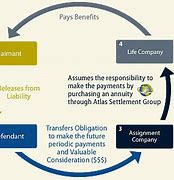
- Student Loan Refinancing Made Simple: Top Tips for 2024
- What is Student Loan Refinancing?
- Why Consider Refinancing?
- Who Should Consider Refinancing?
- Understanding the Refinancing Process
- crucial Factors to Consider
- Top Tips for Student Loan Refinancing in 2024
- Explore varied Repayment Options
- Be Aware of the Risks
- The Bottom Line: Is Refinancing Right for You?
- Conclusion

Navigating the world of student loan refinancing can feel like entering a maze, especially with ever-changing interest rates and confusing terms. But fear not, refinancing doesn’t have to be a stressful endeavor! In 2024, with a little guidance & research, you can potentially lower your monthly payments, shorten your repayment term, and achieve financial freedom faster than ever.
This guide will arm you with everything you need to make sense of the process and ultimately secure the best deal possible. Whether you’re a recent graduate just starting your repayment journey or a seasoned borrower looking to optimize your existing loans, we’ll walk you through the key aspects of refinancing , from eligibility requirements to potential benefits, and how to navigate the process with confidence.
So, let’s dive into the world of student loan refinancing and unlock the possibilities of a more manageable financial future!
Student Loan Refinancing Made Simple: Top Tips for 2024
Student loan debt is a significant burden for many Americans. If you’re struggling to make your monthly payments or are looking to save money on interest, student loan refinancing could be a viable option. Refinancing allows you to consolidate your existing loans into a new loan with potentially lower interest rates, shorter terms, and more favorable repayment options.
What is Student Loan Refinancing?
Student loan refinancing involves taking out a new loan to pay off your existing student loans. This new loan typically has varied terms than your original loans, such as a lower interest rate, a shorter repayment period, or a varied loan type.
Why Consider Refinancing?
There are several compelling reasons why refinancing your student loans might be beneficial:
Lower Interest Rates: A lower interest rate translates to lower monthly payments and less interest paid access-based over the life of the loan. This can significantly reduce your overall debt burden.
Monthly Payment Reduction: Refinancing can lower your monthly payments, complimentarying up cash flow for other financial objectives like saving, investing, or paying off other debts.
Shorter Loan Term: A shorter loan term means you’ll pay off your debt faster, reducing the total amount of interest you accrue.
Fixed vs Variable Rates: Refinancing allows you to switch from a variable interest rate to a fixed interest rate, providing stability and predictability in your monthly payments.
Refinancing to a Better Loan Type: If you have private student loans with unfavorable terms, refinancing to a federal loan program with more flexible repayment options could be benefitous.
Who Should Consider Refinancing?
Refinancing may be a good option for borrowers who:
Borrowers with Good Credit Scores: Lenders typically offer lower interest rates to borrowers with strong credit history. Aim for a credit score of 700 or higher to secure the most favorable terms.
Borrowers with a Stable Income: Lenders need assurance that you can make consistent monthly payments. A stable income history makes you a more attractive borrower.
Borrowers with Private Loans: Private student loans often have higher interest rates and less flexible repayment options than federal loans. Refinancing your private loans could save you money and offer more favorable terms.
Borrowers with Federal Loans (with caveats): Refinancing federal loans into private loans can be risky. You might lose access to federal loan benefits like income-driven repayment plans and loan forgiveness programs. Carefully weigh the pros and cons before refinancing federal loans.
Understanding the Refinancing Process
Steps to Refinancing
The refinancing process typically involves these steps:
1. study and Compare Lenders: study varied lenders and compare their interest rates, fees, and loan terms. Use online comparison tools or contact lenders directly for quotes.
2. Gather Necessary Documents: Lenders will require you to offer documentation such as your credit report, income verification, and student loan statements.
3. Apply for Refinancing: Submit your application and supporting documents to the lender.
4. Review and Sign Loan Documents: Carefully review the loan terms and conditions and sign the loan documents once you’re satisfied.
5. Funds Disbursement: The lender will disburse the loan funds to pay off your existing student loans.
crucial Factors to Consider
Interest Rates and Fees: Focus on finding lenders with low interest rates and minimal fees.
Loan Terms and Repayment Options: select a loan term that aligns with your budget and financial objectives. Consider varied repayment options such as fixed, variable, or income-driven plans.
Loan Servicer and Customer Support: study the lender’s reputation and customer service experience. You want a reliable loan servicer who can offer excellent support.
Eligibility Requirements: Make sure you meet the lender’s eligibility requirements, including credit score, income, and debt-to-income ratio.
Top Tips for Student Loan Refinancing in 2024
Shop Around and Compare Rates: Don’t settle for the first offer you receive. Shop around and compare rates from multiple lenders to find the optimal deal.
Use Online Loan Comparison Tools: Online comparison tools can help you quickly compare rates and terms from varied lenders.
Contact Multiple Lenders: Reach out to several lenders and request personalized quotes.
Negotiate for Lower Rates: Don’t be afraid to negotiate with lenders for a lower interest rate, especially if you have good credit and a stable income.
Improve Your Credit Score: A higher credit score can qualify you for lower interest rates. Take steps to improve your credit score before applying for refinancing.
Monitor Your Credit Report: Check your credit report regularly for any errors or inconsistencies. Correct any inaccuracies to maintain a strong credit score.
Pay Bills on Time: Paying bills on time is essential for maintaining a good credit score.
Reduce Credit Utilization: Keep your credit utilization ratio low (under 30%) to improve your credit score.
Consider a Secured Credit Card: If you have limited credit history, consider a secured credit card to build credit.
Explore varied Repayment Options
Fixed vs Variable Interest Rates: Fixed interest rates offer stability and predictability, while variable rates can fluctuate.
Traditional vs Accelerated Repayment: Traditional repayment plans typically have longer terms, while accelerated plans have shorter terms and outcome in faster debt payoff.
Income-Driven Repayment Plans: These plans tie your monthly payments to your income, making them more manageable if your income fluctuates.
Be Aware of the Risks
Loss of Federal Loan benefits: Refinancing federal loans into private loans can outcome in the loss of federal loan benefits like income-driven repayment plans, loan forgiveness programs, and deferment or forbearance options.
Potential for Higher Interest Rates: If your credit score has declined or your financial situation has changed, you might be offered a higher interest rate than you anticipated.
boostd Monthly Payments: If you select a shorter loan term, your monthly payments could boost.
The Bottom Line: Is Refinancing Right for You?
Ask Yourself These querys:
- Do I have good credit?
- Can I afford the monthly payments?
- Are my current interest rates high?
- Do I qualify for federal loan benefits?
Consult a Financial Advisor: Gain expert advice from a financial advisor to make an informed decision about whether refinancing is right for you. They can help you develop a personalized financial plan and consider your individual circumstances.
Conclusion
Student loan refinancing can be a powerful tool to save money and improve your financial situation. By following these tips and doing your study, you can make an informed decision about whether refinancing is right for you. Remember to consider the potential risks and consult with a financial advisor for personalized guidance.
















